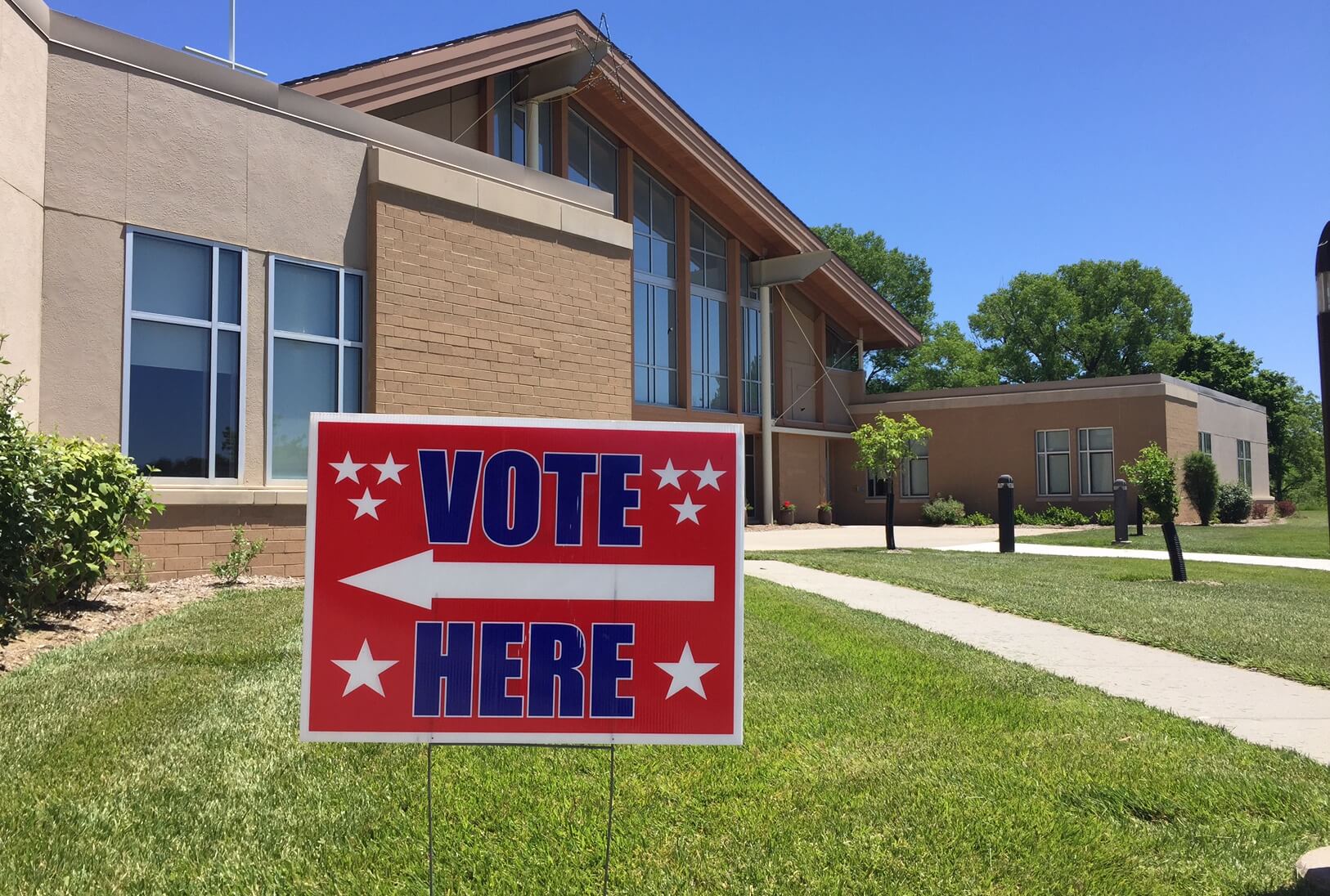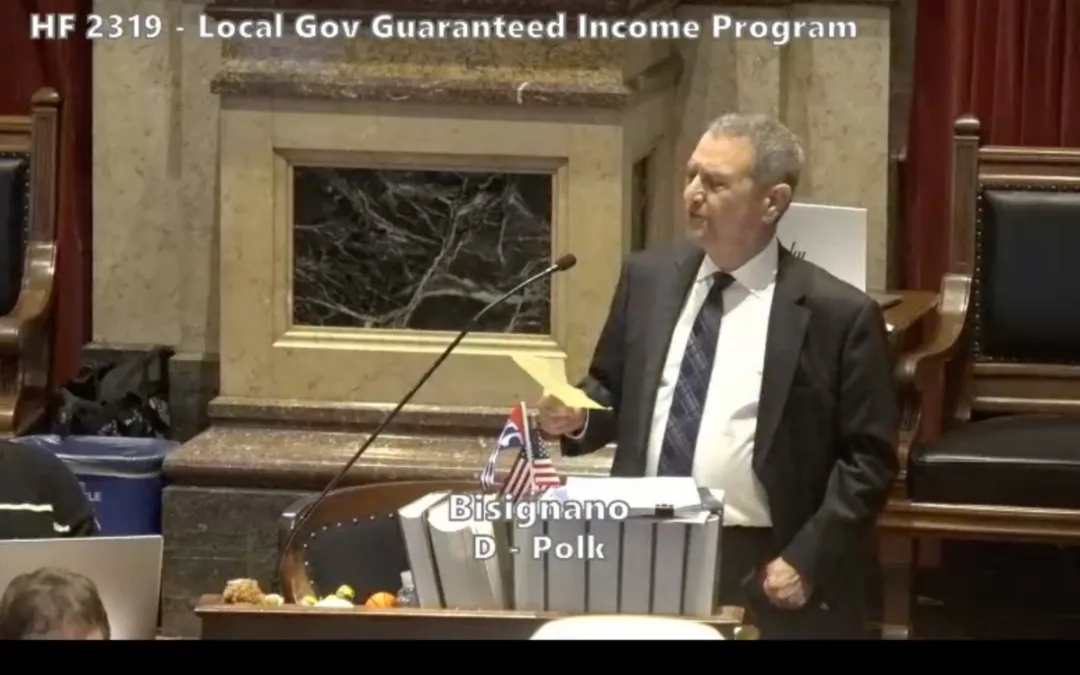
Democrats in Iowa are still buzzing about the good news – finally, good news – out of Virginia and beyond from Tuesday night’s elections. Maybe, just maybe, 2018 will be the sort of wave year for Democrats we’re hoping for in this red-trending state. Or, at the very least, it won’t be yet another blowout loss kind of cycle.
And it reinforces my advice from immediately after Donald Trump’s election one year ago: if you’re a Democrat who’s ever thought about running for office, 2018 is the year. Because, either one of two things are going to happen: it’s a Democratic wave and we pick up all kinds of seats we wouldn’t normally, or Democrats lose horribly again, the state party goes into the wilderness for decades and it’s not like you’d ever win for years to come – may as well get it out of your system now.
Fortunately, the former situation is starting to look a little more likely now.
So, what lessons can Iowa Democrats learn from Virginia’s results?
Everyone Get On The Ballot
The most obvious point is that Democrats need to contest as many races as possible, both because you never know what seats you can pick up in a good year and because local enthusiasm helps the top-of-ticket. Democrats won many districts in Virginia – both legislative and local county supervisor – that they hadn’t controlled in decades (and even at least one county board seat that Democrats had literally never won in all of Virginia history). Even those that came up short generated local enthusiasm that helped get Ralph Northam and Justin Fairfax elected statewide.
As the Huffington Post noted, competing nearly every seat mattered.
“In Republican-held precincts with a Democratic House challenger, there was a 20 percent jump in votes for the Democratic gubernatorial candidate relative to 2013, according to an analysis of voter data conducted by Reed Shaw, a former Barack Obama presidential campaign data specialist, and shared with HuffPost,” they wrote after the election. “In GOP precincts without a Democratic House challenger, there was no change.”
There’s a simple reason for this. As my fellow former or current campaign field staffers know, there’s typically only two pools of potential volunteers to recruit to go knock doors, collect absentee ballots and make phone calls: longtime local activists and the friends and families of each local candidate. Your county recorder candidate’s brother, aunt and teenage kids may have never considered volunteering in politics before, nor would they for a top-of-ticket candidate. But they’ll put on a campaign t-shirt, march in a parade and go round up absentee ballot requests for their friend or family member. When you don’t fill every race with a Democratic candidate, that’s a big group of volunteers you’re missing out on, and it makes it harder to produce votes for the entire ticket.
Plus, maybe you’re a voter who’s not super-excited about the party’s top-of-ticket nominee. But if you’re motivated to get out to the polls because of a really exciting local candidate running for the legislature, you’re probably end up voting for the gubernatorial candidate too. The important thing is just getting Democrats to the polls.
Some local seats in rural Iowa counties may be long shots for Democrats, but you never know what’s going to happen in the low-profile races in 2018. A Democratic wave could sweep in everyone with a D next to their name up and down the ballot. The incumbent Republican could get lazy and not campaign. You might just run a really excellent campaign that overcomes partisan affiliation. In 2018, it’s worth a shot, both for you and the benefits it’ll bring to the rest of the Democratic ticket.
Finally, one thing that’s scared off many potential candidates for local office is the fear of nasty, negative campaigns that will attack them personally. However, look at the municipal races around Iowa from this week. Even the most expensive and high-profile ones, like the Des Moines council and Cedar Rapids mayoral races where combined hundreds of thousands of dollars were spent, stayed pretty positive. The reality is that for most races like county supervisor, county auditor or county treasurer, things don’t get that intense (obviously, it’s different for a highly targeted legislative district or races further up the ballot). No one raises the money to do opposition research, they don’t have the funds to disseminate those attacks widely and people generally keep local campaigns positive when its their neighbors they’re running against.
Working Together/Many Approaches Can Succeed
On Tuesday night in Virginia, Democrats of all backgrounds and ideologies were able to win. Lots of women won, a transgender candidate prevailed, as did a Democratic Socialist. Candidates with more moderate positions on a handful of issues defeated Republicans, just as staunchly progressive ones did. The important thing is that people had a united goal in mind: defeating the Republicans, not trying to defeat each other within the party.
Tom Perriello, the Democrat who ran to Northam’s left in the primary, got praise from going all-in for Northam and legislative races after his defeat. A similar effort will be needed by all of Iowa’s gubernatorial candidates who don’t win next year’s seven-way Democratic contest, even if a contested convention tests supporters’ nerves.
Going forward, it also might be best for Democrats to not obsess as much over theoretical differences and disputes (including ones well in the past). Ideological differences are very important, and that’s what primaries are for. After those are done, it’s time to organize. The party can figure out the rest of their differences once they’re all in office, and those Democratic elected officials ought to be held accountable for what policies they vote on. But in the age of Donald Trump, where democracy itself is seriously at risk, simply winning back control has to be a top priority. Getting someone elected who is with you on 80% of the issues is kind of important when the alternative is outright authoritarianism.
Those who continue the burn-it-all-down route, like Democracy for America did in attacking Northam as a racist days out from the election, won’t be tolerated much longer, and they could find themselves further ostracized within the party. Trying to go nuclear ahead of a key election against your potential allies to leverage the situation for your own gain is utterly reckless, especially when the fallout for real life people could be devastating if the Republican ends up winning.
Democrats may also want to reconsider some of the labels we’re affixing to people. Some considered Northam a centrist or moderate Democrat, yet he supported a $15/hour minimum wage, Medicaid expansion and no-cost community college. Those on the party’s left are winning the policy argument, and they’re helping candidates who may not have been their first choice get elected.
Reasons For Caution
Even with all the promising success for Democrats this best week, it’s still important to remember where those gains came from. What we saw in Virginia may be the next stage in a serious realignment of the parties, but the biggest shifts were contained to suburban areas of the state. Only one of the delegate seats that Virginia Democrats flipped on Tuesday wasn’t won by Clinton last November. Some places in rural, southern Virginia even moved further to the Republicans.
What does that mean for Iowa Democrats? There’s still work to be done on the messaging front, as even though Tuesday’s news was encouraging, the party couldn’t retake either legislative chamber with those kind of results alone. In Iowa, there’s only a handful of legislative districts that Clinton carried that are currently held by Republicans.
On the Senate side, Republican Senator Roby Smith looks to be the most endangered with the new voting trends. His SD 47 was one of the only areas of the state that saw a net-shift toward Democrats in 2016, where Clinton won 47% to Trump’s 46%. Bettendorf, which Clinton actually won overall, moved significantly in Democrats’ favor.
In the House, the targets are a familiar set of names. GOP Representatives Chris Hagenow (HD 43 – 53% Clinton, 41% Trump) and Pete Cownie (HD 42 – 51% Clinton, 42% Trump) are at very serious risk in their Des Moines metro districts if a blue suburban wave sweeps Iowa. In Linn County’s Marion suburb, Republican Representatives Ken Rizer (HD 68 – 48% Clinton, 45% Trump) and Ashley Hinsley (HD 67 – 47% Clinton, 46% Trump) should be in trouble.
Representative Rob Taylor of West Des Moines could come on the target board for the first time, as his Dallas County suburbs district saw a close 45% Clinton, 48% Trump spread. And often-contested Walt Rogers’ Cedar Falls district saw a 45% Clinton, 49% Trump result. Senator Rick Bertrand’s Sioux City seat had a 45% Clinton, 50% Trump margin, though he may face issues with the wealthier northside precincts in town.
Democratic Senator Kevin Kinney could be in better shape in his swing district – even though Trump carried it 49% to Clinton’s 45%, the Johnson County section of his district (53% Clinton, 40% Trump) may see much higher turnout and Democratic support.
Looking at the longterm 2020 picture, Des Moines suburbs Republican Senators Charles Schneider (SD 22 – 48% Clinton, 45% Trump) and Brad Zaun (46% Clinton, 46% Trump) may become top targets.
But that’s about it for districts up this year. Were Democrats to sweep only the districts that Clinton won, they would pick up just four seats in the house and one in the senate. Other districts that Democrats hope to target, like Senator Mark Chelgren’s Ottumwa-based seat (38% Clinton, 57% Trump) will require a much different path to victory than what the party saw in Virginia.
Then again, Iowa Democrats did see a winning strategy in the Fairfield special election, despite Trump carrying it by a huge margin in 2016. Then again, again, Fairfield is also home to a highly-educated populace, making it unique among rural districts. Then again, again, again, that race also proved the limits of the type of Republican fear-mongering campaign that Ed Gillespie failed to win on in Virginia.
Basically, who knows exactly how things will play out in 2018. Overall, Democrats have real reason to hope for a suburban wave that picks up several seats. With an energized grassroots that contests a lot more local races with candidates, Democratic turnout statewide could see a big improvement, giving that much of a boost to the gubernatorial nominee. Everything is shaping up well for potential candidates for local office to take the risk of putting their name on the ballot next year. And, again – if not 2018, then when?
by Pat Rynard
Posted 11/11/17
Politics

Biden marks Earth Day by announcing $7 billion in solar grants
The Biden administration on Monday announced the recipients of its Solar For All Program, a $7 billion climate program that aims to lower energy...

6 terrifying things that could happen if the Comstock Act is used to target abortion
Does 1873 sound like a really, really long time ago? Well, that’s because it is—but if Republicans and far-right anti-abortion activists have their...
Local News

No more Kum & Go? New owner Maverik of Utah retiring famous brand
Will Kum & Go have come and gone by next year? One new report claims that's the plan by the store's new owners. The Iowa-based convenience store...

Here’s a recap of the biggest headlines Iowa celebs made In 2023
For these famous Iowans, 2023 was a year of controversy, career highlights, and full-circle moments. Here’s how 2023 went for the following Iowans:...





